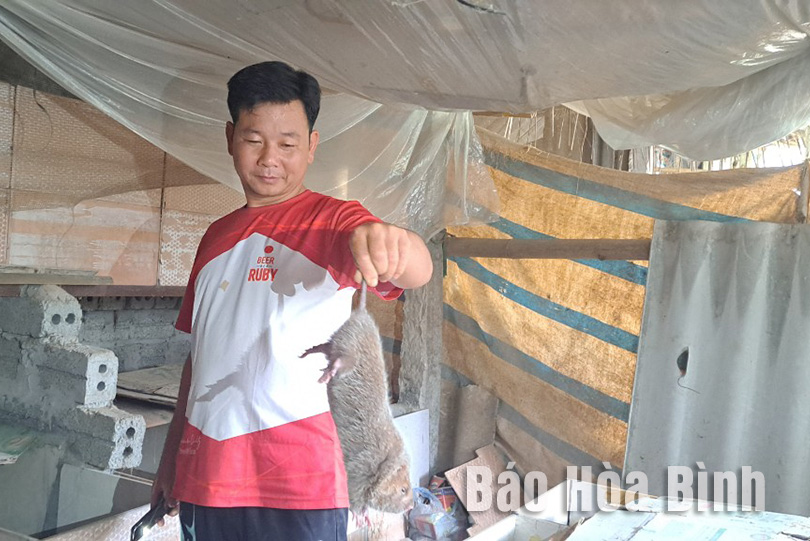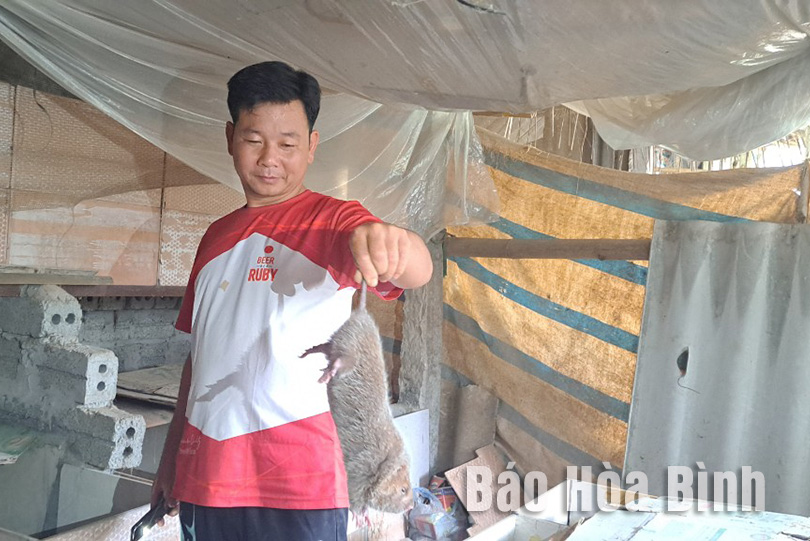
After several unsuccessful attempts to raise pigs, buffaloes and cows, Nguyen Hong Minh who resides in Mui hamlet, Hoa Binh city’s Doc Lap commune decided to try breeding bamboo rat.

Nguyen Hong
Minh raises about 200 bamboo rats, bringing about high economic efficiency.
like other farmers in Doc Lap commune, Minh has cultivated
many types of crops and raised pigs, buffaloes, and cows but they failed to
deliver expected results.
Even when he harvested bumper crops, profit was low due to
plummeting price. He raised pigs for several years, but suffered from losses
due to diseases and high prices of animal feed.
Upon knowing that game meat is favoured by consumers, he
thought of raising bamboo rats as food for this type of rat is available in the
locality and brings about higher value.
At first Minh bought bamboo rats from people who hunt bamboo
rats in the wild and turned his old pig barn into a breeding facility. The
bamboo rats grew well, but after giving birth, the female ones often bit their
babies to death, reducing the number of offspring as well as economic
efficiency of farming.
Minh looked for information about the trade on the internet
and found out that many establishments had succeeded in raising wild bamboo
rats with proper licence. He decided to follow suit. After more than two years,
his bamboo rats grew healthily and rapidly multiplied. The offspring are sold
to breeding households in the locality and the mature ones for consumption.
Sometimes he did not have enough bamboo rats to sell.
Drawing lesson from failed attempts, he focused on raising
native bamboo rats and expanding the herd. His effort has been paid off as now
he has 200 bamboo rats.
According to Minh, it is easy to raise bamboo rats because
they eat sugarcane and bamboo only once a day and can reach a weight of 1.5-2kg
after 12 months of breeding.
With a selling price of 600.000 VND (24.5 USD) per kg, this
kind of rat brings higher economic value than raising chicken or pigs, he
said.
Since the beginning of this year, under the direction of the Department of Agriculture and Environment, the Sub-Department of Agricultural, Forestry, and Fishery Product Quality Management has strengthened the integration of the professional activities to promote and guide the organizations and individuals in the production and trading of agricultural, forestry, and fishery products to comply with the legal regulations regarding the use of chemicals, pesticides and veterinary medicines in crop cultivation, livestock farming and aquaculture. They also provide guidance to processing and manufacturing establishments on keeping the records to trace the product origins and using food additives from the approved list according to the regulations.
Hoa Binh province saw a significant rise in state budget revenue in the first two months of 2025, heard a meeting chaired by Vice Chairman of the provincial People’s Committee Quach Tat Liem.
Ha Thi Ha Chi, a 26-year-old graduate in law, has taken an unconventional path by returning to her hometown in Mai Chau district to establish the Tong Dau Cooperative, creating stable jobs for local women and bringing Thai ethnic brocade weaving to the global market.
As the Lunar New Year 2025 approached, pork prices surged, creating a profitable season for farmers in Tan Vinh commune, Luong Son district. Taking advantage of the rising demand, Can Minh Son, a farmer from Coi hamlet, sold over 30 pigs at 69,000 VND/kg, each weighing more than 100 kg. After deducting expenses, his family earned a profit of over 50 million VND.
alternate member of the Central Party Committee, Secretary of the Hoa Binh provincial Party Committee Nguyen Phi Long on March 5 had a working session with Yan Jiehe, Founder and Chairman of the China Pacific Construction Group, one of China's largest private corporations in the field of transport infrastructure. Deputy Secretary of the provincial Party Committee, Chairman of the provincial People's Committee Bui Duc Hinh and leaders of provincial departments and sectors also attended the working session.
The electronic printed circuit board (PCB) manufacturing and processing plant of Japan’s Meiko Group, located at Da River Left Bank Industrial Park in Hoa Binh city with a total investment of over 200 million USD, is expected to create thousands of jobs and make a significant contribution to the local budget.



